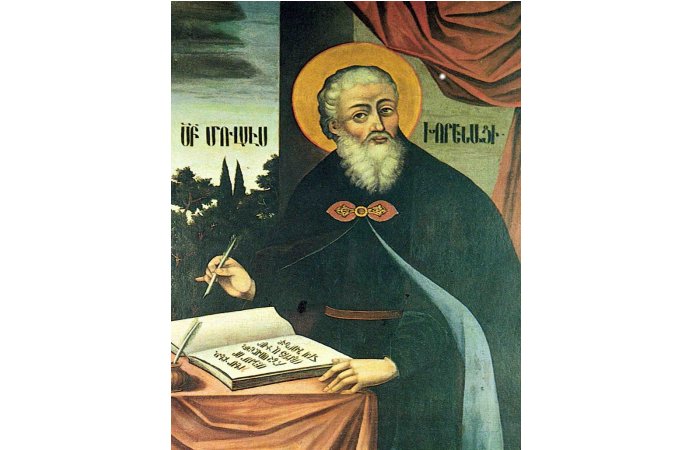A. Sutherland - AncientPages.com - The first mention of Armenia in writing is the ca. 4000 BC Sumerian epic of Gilgamesh, where the country was described as a rich country where you must “go by mountain, return by water.”
Armenia is a very old country surrounded by legends and myths and described in ancient heroic epics of the Armenian people.
One of the greatest heroic epics of the Armenian people is the great story of Hayk, the forefather and founder of the first Armenian Kingdom of ‘Ar-Mania’ in 3000 BC.
Movses (Xorenac‘i) Khorenatsi (ca. 410–490 AD) was a prominent Armenian historian from the period of Late Antiquity and the author of the History of Armenia.
He wrote down the epic about Hayk, a legendary patriarch of a tribe of people ruled by the Assyrians, in his ‘History of Armenia’ in the fifth century, from the oral tradition of the ancient troubadours.
The epic story tells about Hayk, a brave man, who was trying to break free from the overlords and led his tribe into the lands of Armenia. This resulted in the battle between Armenians led by Hayk and an Assyrian army of giants led by the god-king Baal.
When Baal saw this sudden and dangerous resistance, he climbed back on the hill from which he had stood and waited for his forces to gather and attack again from all sides. Haik, the mighty and skilled archer, stood opposite Baal; he stretched his bow and shot a three feathered arrow at his heart.
The arrow pierced the iron and passed through Baal's chest, and thus the vain Baal was felled and gave his last breath.
Movses Khorenatsi, an Armenian historian and author of the History of Armenia.Image via Wikipedia
When Baal's army saw this frightful sight, it retreated without looking back.
Haik named this battlefield Haiyotsdzor (the valley of Hai), and the spot where Bel fell - Gerezman (the Grave).
The battle had taken place on the banks of Lake Van. Haik had Bel's body dyed with many colors and hung from a high place so his wives and children could see it.
The Assyrians were defeated and the people of Hayk were liberated. These grateful people named their land “Hayastan” in honor of their victorious king.
In another series of myths, Hayk’s son, Ara, extended the country’s lands to all of the Armenian Plateau (Eastern Turkey and present-day Armenia).
Ancestral Armenians have always possessed a rich oral history with their Near Eastern neighbors, including a very old form of the Flood Epic, shared by Assyrians, Babylonians, and Sumerians.
Some say the Ararat valley is also the location of the first city after the Biblical Flood, and that Armenians are direct descendants of Noah. Their land could be the spot where Noah and his son descended when the ark rested on the famous mountains of Ararat.
Written by – A. Sutherland AncientPages.com Staff Writer
Copyright © AncientPages.com All rights reserved. This material may not be published, broadcast, rewritten or redistributed in whole or part without the express written permission of AncientPages.com
Expand for referencesReferences:
S.Z. Najmuddin, Armenia : a Resumé : with Notes on Seth's Armenians in India








